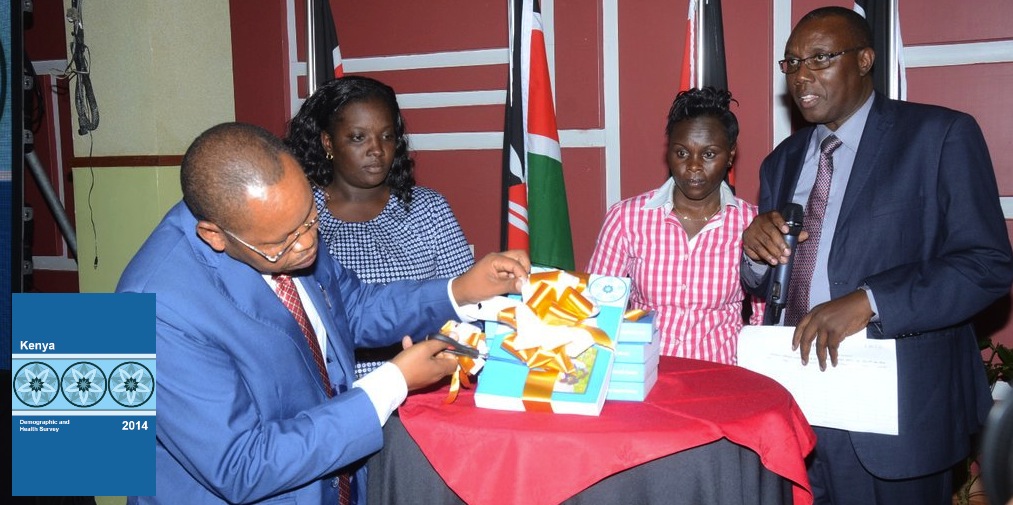Kenya has made significant steps in family health indicators over the past five years as indicated in the just released Demographic Health Survey (KDHS). Results from the 2014 KDHS show a continued decline in the total fertility rate (TFR). Fertility decreased from 4.6 in 2008-09 to 3.9 in 2014, the lowest TFR ever recorded in Kenya. This is corroborated by the marked increase in the contraceptive prevalence rate (CPR) from 46 percent in 2008-09 to 58 percent in the current survey.
Knowledge of at least one contraceptive method is universal in Kenya, with more than half of married women are using a contraceptive method (58 percent), with 60 percent of modern contraceptive users obtaining them from government health facilities. The decline in fertility accompanied a marked decline in infant and child mortality. Under-five mortality declined from 74 to 52/1,000, and infant mortality declined from 52 to 39/1,000 as compared to the 2008/09 survey.
Other statistics from the survey indicate that ninety-six percent of women with a live birth in the five years preceding the survey received antenatal care from a skilled provider, an improvement from 92 percent in the 2008-09 KDHS. As a result, maternal mortality dropped from 488 recorded in the 2008/09 survey to 362/100,000. Fifty-eight percent of women also made the recommended four or more antenatal care visits during their pregnancy, an increase of 11 percentage points from the 2008-09 KDHS (47 percent).
Awareness of AIDS is universal in Kenya. However, only 56 percent of women and 66 percent of men have comprehensive knowledge about HIV and AIDS prevention and transmission; that is, they know that both condom use and limiting sexual intercourse to one uninfected partner can prevent HIV, they are aware that a healthy-looking person can have HIV, and they reject the two most common local misconceptions about HIV: that HIV can be transmitted by mosquitoes and by sharing food. Seventy-two percent of women and 62 percent of men know both that HIV can be transmitted through breastfeeding and that the risk of mother-to-child transmission can be reduced by taking special drugs during pregnancy.
Various speakers at the launch noted that although some of the indicators presented in the survey are still high as compared to the World Health Organisation targets, the progress made has been largely attributed to increased Government and partner interventions at both national and county levels following the devolution of health services in 2010. The event was presided over by the Ministry of Planning and Ministry of Health Principal Secretaries, Saitoti Torome and Nicholas Muraguri respectively.


